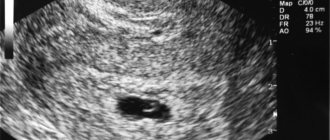The nature of brown discharge during pregnancy
Bloody discharge can be normal or pathological; evaluate its color, smell and abundance. Be sure to tell these nuances at the antenatal clinic.
Having managed to recognize the “alarm bells”, the woman will prevent possible problems and will be able to carry the baby. Their character will help determine the problem. It is important to determine whether they are accompanied by pain in the lower abdomen, back, dizziness and other alarming symptoms.
What do light browns mean?
Light brown discharge is associated with hormonal changes and changes in the structure of the flora. Blood will appear with tissue damage and mix with normal secretions.
If pale pink alternates with mucous discharge
Such discharge appears in the first weeks of pregnancy at the time of attachment of the fertilized egg to the walls of the uterus. Blood vessels may be damaged, the blood from which mixes with natural vaginal discharge. A neutral smell, absence of itching and other discomfort will allow you to recognize this moment.
What does heavy brown discharge at the end of pregnancy indicate?
Brown discharge at any stage of pregnancy
Discharge is not always associated with a specific period of gestation; some may appear at any time. The sources of deviation can be structural features of the uterus and various diseases.
Erosion on the cervix
The reasons for the appearance of brown streaks in the discharge during pregnancy include erosive spots on the uterine cervix.
The problem occurs in both women who have given birth and pregnant women and is associated with damage to the epithelium.
Erosion does not have pronounced symptomatic manifestations; after a gynecological examination or sexual intercourse, it can cause slight brownish discharge. Therapy for pathology involves cauterization, but it is not performed during pregnancy due to subsequent problems with natural childbirth. During the gestation period, preference is given to drug treatment.
Important! Ignoring the disease and refusing therapy can cause the development of an oncological process.
Polyps of the uterus and its cervix
The course of pregnancy can be complicated by the formation of polyps affecting: the vagina, the body of the uterus, and its cervix.
Benign neoplasms arise under the influence of:
- unstable hormonal levels;
- complicated or interrupted pregnancy;
- infections;
- hereditary factor;
- pathologies of the endocrine department.
Depending on the position of the polyp, the disease causes the following symptoms:
- brownish-red secretion;
- nagging pain in the lower abdomen;
- unpleasant smell.
Formations can be single or multiple and require treatment. Certain varieties are prone to spontaneous growth and spread of infection, and can cause spontaneous abortion. If the polyp does not threaten pregnancy, the rules require its removal after childbirth.
Could brown discharge be a sign that labor has begun?
It is impossible to predict the onset of labor. If during pregnancy the following diagnoses were made:
- placenta previa, its low location;
- thinning of the walls of the uterus was observed, then you should always be on alert.
overlap of the internal pharynx;
If a brown “smear” appears, you should immediately go to the hospital.
If brown mucus manifests itself in the last weeks of pregnancy, and at the same time the plug and amniotic fluid have receded, then you should pack your things and go to the maternity hospital. The body is ready for labor, which is about to begin, and the long-awaited meeting with the baby is ahead.
Emergency conditions
If brown blood clots appear in the early or late stages of pregnancy, doctors recommend hospitalization of the woman. To ensure the need for emergency hospitalization, the nature of the discharge is assessed:
- copious or spotting;
- color ranges from pale pink to bright red or dark brown.
If at the same time you feel sick, dizzy, or feel very weak, then you need to go to the hospital to assess the child’s condition. Premature placental abruption is a condition that is dangerous for both the baby and the mother. Anxiety states are accompanied by abdominal pain, weakness, dizziness, and low blood pressure. If there is internal bleeding, the woman is prescribed an emergency cesarean section, and in this case, brown discharge can cause labor.
Brown discharge is a process that can occur at any stage of pregnancy. They can occur early and late. If their appearance during the implantation of the fertilized egg in the first weeks of pregnancy is considered normal and there is no need to worry, then there are cases when they indicate pathology. In such cases, there is a clear threat to the health of the expectant mother and baby. Therefore, it is so important to contact a specialist at the first deviations from the norm and accompanying pain, who will evaluate the consistency, frequency and determine the cause. Timely identification of the problem will allow it to be solved and eliminated before serious consequences occur.
If you have brown discharge during pregnancy
Brown discharge during pregnancy can be normal, indicate a gynecological disease, pathology, or be the main symptom of an incipient miscarriage.
How to figure out when you need to urgently call an ambulance or go to the doctor, and when to wait a little and watch the situation develop? After all, when pregnancy is early, many women perceive brown discharge as a death sentence. Advice one
— register for pregnancy as early as possible. Don’t worry, they won’t prescribe unnecessary tests for you, just as they very often invite you to an antenatal clinic for no reason. But in this way you will be able to find out about possible pathologies as early as possible and maintain the pregnancy.
Tip two
- Follow all doctor’s recommendations. And especially, get tested regularly. For example, an hCG test often reveals an ectopic pregnancy, which often causes dark brown discharge during pregnancy. More about all this.
1. An embryo frozen in development.
If you had noticeable toxicosis, which suddenly disappeared, your breasts became painless, the test was negative (not always), all possible symptoms disappeared, and brown discharge appeared during pregnancy, you need to see a doctor. You will be examined in a chair; if the size of the uterus is smaller than it should be at this stage, most likely you will be sent to donate blood for hCG and (or) have an ultrasound of the uterus. The level of hCG during a frozen pregnancy is reduced, and an ultrasound does not detect the heartbeat of the embryo.
2. Ectopic.
Another terrible complication. The hCG level is lower than with uterine. A woman may experience pain in the pelvic area, often from the fallopian tube or ovary where the fertilized egg develops. Brown discharge in clots occurs during pregnancy. If this pathology is suspected, the woman is immediately hospitalized in a hospital, where, once the diagnosis is confirmed, laparoscopic surgery is performed.
3. Cervical ectopia.
This is damage to the mucous membrane of the cervix. It usually does not manifest itself as pain. The doctor makes the diagnosis after a gynecological examination using a speculum. If the cytology smear is good and there are no signs of a malignant process, the woman is left alone until the end of pregnancy. Bloody discharge soon stops, as true erosion of the cervix heals on its own, and quite quickly. For this reason, brown discharge that appears during early pregnancy does not indicate any pathology.
4. Menstruation.
It is believed that menstruation cannot occur during pregnancy. This is true. But some women still experience small endometrial detachments every 4 weeks in the first trimester, as if repeating the menstrual cycle. This scanty light brown discharge during pregnancy is also not a symptom of a threatened miscarriage. However, their appearance should alert the expectant mother. And of course, physical activity should be reduced, and intimate life should be stopped for a while.
5. Miscarriage.
In the event of a threatened miscarriage, when the discharge during pregnancy is not profuse, the fetus itself is alive, the placental abruption is small, and can still be managed with adequate treatment. However, if there is heavy bleeding in the first trimester, scarlet blood is released - it is unlikely that it will be possible to avoid spontaneous abortion. If there is bleeding, call an ambulance immediately.
Based on materials from www.missfit.ru
Useful video
Blood clots during pregnancy. Bloody discharge with clots during pregnancy
Among the many advantages of pregnancy as a physiological process and as a period in a woman’s life, the indisputable fact is that now you can forget about menstruation for nine months. If the pregnancy proceeds normally, then there are no pads or pain in the lower abdomen, and for many this makes life much easier.
However, unfortunately, successful pregnancies have recently become more the exception than the rule. Stress, nervous tension, living conditions, and so on... All this affects the condition of the woman and, consequently, the developing fetus. Once you get too excited, a mess has already appeared. The threat of termination of pregnancy is no longer something out of the ordinary for anyone, but rather, on the contrary, it is becoming a pattern. Therefore, if you have bloody vaginal discharge, then do not hesitate and do not think - immediately see a doctor. And if there are also blood clots... In general, this is not very good, of course, this should not happen. Bloody clots are bad omens.
Other signs of pregnancy before your period is missed
You can see the signs of pregnancy before the delay not only by the discharge. Usually they are so characteristic that it is difficult not to notice them. Restructuring of the genital area provokes the appearance of nagging pain in the lower abdomen. Increased sensitivity of the breast and an increase in size should cause concern.
A reliable sign of pregnancy in the early stages before a delay is an increase in basal temperature to 37.1–37.3 °C. It should be measured in the rectum in the morning, after waking up. An increase in values in combination with discharge is a sure indicator of conception. Other signs of pregnancy before a missed period, in addition to mucous secretions, include odor intolerance, nausea, and perverted taste.
Discharge during pregnancy is not the same for all women. They can range from watery, slimy like egg white to thick, creamy like cream. Have all sorts of shades of white, beige, sometimes brown, or be completely transparent. The main thing is that the woman does not experience any unpleasant sensations that would cause her discomfort and cause concern.
Photo: ru.freepik.com, pixabay.com/ru
Clots when there is a threat of miscarriage
The most significant symptom of a threatened miscarriage is bleeding. In this case, blood clots may also come out of the vagina. If the bloody discharge is bright red, call an ambulance immediately or better, if possible, go straight to the hospital without waiting for the doctors to arrive.
You should know that in addition to bleeding, when there is a threat of miscarriage, a woman may experience colic and abdominal pain, weakness, increased body temperature, and sometimes vomiting.
Clots during spontaneous abortion
It’s hard to talk about this, but spontaneous miscarriages or abortions, alas, do happen quite often. The woman begins to experience cramping pain that constantly intensifies. In this case, the cervix opens, and the uterus itself begins to contract, pushing out the fetus. Everything is accompanied by blood discharge interspersed with blood clots and even tissue fragments - the fertilized egg exfoliates. In such cases, abortion can rarely be avoided. After the product of fertilization is released (this is the name for the tissue coming out of the vagina in the form of a clot, from which the embryo should have formed), the contractions stop. This indicates that the miscarriage has occurred. This mostly happens in the first days and weeks of pregnancy.
The danger of spontaneous abortion lies in the fact that not all tissues can come out, and the remains of the fertilized egg are still in the uterine cavity. Therefore, curettage is necessary to prevent the development of serious infections and complications.
Clots with thrombophlebitis
However, during pregnancy other types of blood clots may appear - in the veins and vessels. We are talking about thrombophlebitis. The fact is that the blood of a pregnant woman also undergoes certain changes: in particular, the composition of the blood and its clotting mechanisms change. Also during this period, a woman’s blood circulation slows down somewhat - the growing tummy puts pressure on the blood vessels. All this can cause the appearance of blood clots in the vessels, which occurs in 1% of pregnant women. Therefore, if you have encountered a similar problem before, then you need to tell your gynecologist about this even when registering.
Don't worry too much if blood clots are visible on the surface of your legs - in the veins. This does not pose any particular danger, but it requires treatment: you will be prescribed analgesics, local heat, and a leg bandage. You should consult a doctor, even if you do not observe clots close to the surface of the skin, in such cases: the legs are pale and cold, red stripes are visible above the veins, part of the leg may swell, become soft and hot, pain in the leg.
Why do blood clots occur during early pregnancy?
It often happens that a woman develops blood clots during early pregnancy. This phenomenon is in most cases quite dangerous and can pose a threat to both the expectant mother and the fetus. Therefore, any bleeding should be urgently examined by a gynecologist.
Why do blood clots occur in early pregnancy?
In all cases, with the exception of some phenomenal ones, as soon as women begin to become pregnant, the menstrual cycle ends. For some women, the pregnancy process proceeds smoothly, without any severe cases. And others who have weak immunity or poor nutrition may experience problems with the health and development of the baby. One such problem is the formation of blood clots in early pregnancy.
If a woman has blood clots, she urgently needs to see a doctor and undergo treatment, otherwise the consequences can be tragic. Only in exceptional cases, for example, when the fertilized egg is attached to the uterus, the discharge may contain small blood clots that are safe for health.
Signs of blood clots:
- begins to prick in the uterine area;
- increasing pain in the uterine area;
- starts to feel sick and wants to go to the toilet all the time;
- sensation as if being cut inside.
If the above symptoms appear, you should immediately consult a doctor. A gynecologist will be able to accurately determine the cause of blood clots and prescribe the necessary treatment. If a woman in the first weeks of pregnancy sees that slight bleeding has begun, this most likely means that a miscarriage is possible if treatment is not prescribed on time.
Pathologies that result in the formation of blood clots
It has been proven that any bleeding, except in exceptional cases, poses a threat to the developing fetus and can lead to miscarriage and termination of pregnancy. Depending on what color the blood comes out, the following dangerous conditions for a woman can be predicted:
- Ectopic pregnancy. Few people can distinguish an ectopic pregnancy from an intrauterine one. But there are still signs of an ectopic pregnancy. In addition to bleeding, ectopic pregnancy is characterized by such a symptom as pain in the fallopian tube, which radiates to the back or slightly to the side of the developing fetus. An ectopic pregnancy is dangerous because it can lead to rupture of the fallopian tube.
- Frozen pregnancy. Sometimes it turns out that a lack of certain substances leads to the embryo dying and the pregnancy fading, which leads to the mother’s body rejecting the fetus. This process is always accompanied by acute pain in the lower abdomen, elevated body temperature, nausea and vomiting. After some time, blood begins to flow, which determines the outcome of the pregnancy.
- Detachment of the fetus (fertilized egg) or placenta. Doctors cite a huge number of reasons that may be related to the fact that the fertilized egg (usually in the early stages) or the placenta (in late pregnancy) begins to exfoliate, thereby separating from the place where the egg recently attached itself. As a result, a bruise occurs at the site of placental abruption, and blood begins to slowly leak out of the damaged vessels, which eventually forms blood clots. The resulting blood clot turns brown and smears, which is an accurate symptom that the placenta or fertilized egg has detached from the place where it was attached.
- Spontaneous abortion. Very often, gynecologists notice cases when a pregnant woman’s body begins to reject the fetus. In such cases, severe pain is usually observed, because the cervix opens, which leads to sharp contractions of the uterus, and the mother’s body begins to push out the fetus. This whole process is accompanied by heavy bleeding, and not only the fetus, but also the female body is at great risk.
- Thrombophlebitis. When pregnancy begins, a woman’s entire body undergoes changes, including the composition of her blood. Blood clotting decreases, blood circulation slows down, and the fetus begins to put pressure on all blood vessels. Because of this, 1% of all women develop blood clots in their vessels. According to doctors, they do not pose any particular danger, but treatment must be carried out.
All of the above conditions are extremely dangerous for women and the fetus and, if measures are not taken immediately, this will lead to the loss of the fetus and termination of pregnancy.
Based on materials from vovremiaberemennosti.ru
White clots with thrush
When it comes to clots discharged from the vagina during pregnancy, these can also be white clots of mucus. If they have a cheesy consistency and a characteristic sour smell, you have thrush. There is also a feeling of severe itching and even burning in the vagina. While carrying a child, candidiasis simply attacks the woman’s weakened body. The disease can manifest itself in any trimester or appear from the first days and not go away until the very end of the term. You definitely need to get treatment before giving birth. Wear only natural underwear, lubricate the vagina with kefir, do not use soap for intimate hygiene - wash with a soda solution. What else to do in such cases - read on our website.
Whatever the clots you have, you should still find out the reason for their appearance and do everything that is required in your situation. Don’t let your pregnancy be overshadowed by such unpleasant things!
The period of bearing a child is a wonderful time. And every woman wants to experience only pleasant emotions and sensations for 9 months. But, unfortunately, modern living conditions, especially in a big city, have a negative impact on the health of a pregnant woman. A woman is affected by: poor environment, frequent stressful situations, unnatural food, large amounts of household chemicals. And no matter how hard she tries to reduce the effect of these factors on the development of her pregnancy, there is no way to avoid them completely.
One of the pathological phenomena that a woman may encounter is the discharge of a bloody clot from the vagina during pregnancy. Such an incident should alert a woman, because this is a sign of the development of a pathology that is dangerous not only for the health of the mother and child, but also for the successful pregnancy in general.
Causes of blood clot discharge during pregnancy
During a normal pregnancy, there should be no bleeding. Therefore, if a woman notices blood clots on her underwear during pregnancy, she should see a gynecologist as soon as possible. Since in some cases, with timely provision of medical care, the development of pathology can be stopped and the pregnancy can be maintained. Next, we will look at the cases in which vaginal bleeding with clots may appear during pregnancy, and what a woman should do if they are detected:
Threat of premature termination of pregnancy (miscarriage)
If a pregnant woman feels dizzy, weak and nauseous, her body temperature has risen, and bright red discharge with blood clots has appeared, then these are clear symptoms of a threatened miscarriage. A pregnant woman who experiences the symptoms described above should immediately receive qualified medical care: if possible, then she should go to the hospital herself, if not, then call an ambulance. The sooner a woman is examined by a gynecologist, the greater the likelihood of maintaining the pregnancy.
Hematoma
In some cases, the fertilized egg with the embryo is not implanted firmly enough into the uterine cavity, and eventually separates from it. A hematoma begins to form at the damaged area of the mucous membrane, blood accumulates, and then it leaves the uterine cavity in the form of a dark brown clot. During pregnancy, a hematoma in the uterine cavity is potentially dangerous for the further normal development of the child. Therefore, even if the bleeding is not profuse, “spotting”, a pregnant woman should definitely visit a gynecologist.
Spontaneous termination of pregnancy
It happens that the embryo turns out to be non-viable, and then the woman’s body tries to get rid of it on its own. This usually occurs within the first days or weeks after conception. Discharge in clots during pregnancy, which itself is interrupted, is bright red in color and contains fetal tissue and parts of the placenta. Even if it seems to a woman that the fertilized egg has completely come out of her, she still needs to contact a gynecologist as soon as possible so that he can refer her for uterine curettage. This procedure must be carried out, since parts of the tissues of the fertilized egg could remain in the organ cavity, and they can cause the development of an inflammatory process in the uterus and even sepsis.
Frozen pregnancy
Sometimes it happens that the embryo stops developing and dies. Such cases are called frozen pregnancy. In the early stages, it is difficult to suspect and diagnose it in a timely manner, since there are no fetal movements yet. One of the signs of the development of such a pathology is the appearance of scanty discharge with bloody clots during pregnancy. A woman should definitely consult a gynecologist the first time clots with blood streaks appear. After all, a dead embryo will soon begin to decompose in the uterine cavity. And this is fraught not only with inflammation of the genital organs, but also with the development of sepsis, which poses a threat to a woman’s life.
As you can see, the reasons for the appearance of bloody clots from the vagina during pregnancy are quite serious. And they pose a threat not only to the life of the fetus, but also to the life of the mother.
Causes of blood clots
Situations in which a blood clot has passed during pregnancy require special attention. In the first months of gestation, such phenomena are extremely dangerous and can result in fetal death or severe blood loss to the mother. Typically, such symptoms indicate the development of a spontaneous miscarriage, and the clot is a fragment of embryonic tissue. Typically, such bleeding with clots begins suddenly during bowel movements or urination, when lifting heavy objects, or during any other muscle strain of the perineum or abdominal wall.
If tissue separation occurs. It is no longer possible to maintain the pregnancy, because fetal malformations very often provoke expulsion. Then spontaneous abortion is a much better option than the birth of a obviously sick or non-viable baby. In this way, the body itself identified an anomaly in the fetus and got rid of such a child. You need to come to terms with what happened and move on, because the situation could have ended differently.
If you feel unwell, you should consult a doctor as soon as possible
There are many reasons for the appearance of bleeding and clots. But any of them requires the intervention of specialists. The fertilized egg may not be completely rejected, then particles will remain in the uterine cavity that will begin to decompose, which will cause a severe infectious process.
Sometimes there are no symptoms at all, which should be alarming. If signs of pregnancy suddenly disappear, such as breast tenderness and swelling, dizziness and toxicosis, then you should also contact an antenatal clinic.
Threat of interruption
If the patient faces the threat of miscarriage or spontaneous termination of pregnancy, then periodic pulsating painful sensations appear that accompany the escaping blood. The process usually begins with a slight bloody smear, but if this sign is neglected, the bleeding will develop to an intense level, and the embryo will exfoliate and slip out of the uterus. But such a sad outcome is not always possible.
- If the embryo has not exfoliated and is tightly attached to the uterine endometrium, then there are chances to save the pregnancy, and they are not so few.
- If at the very beginning of the abortive process the fetus had any serious defects, or the abortive processes developed to the point of irreversibility, then a complete miscarriage occurs.
- Sometimes such an interruption occurs against the background of inflammatory lesions of the reproductive system, traumatic injuries or infections that affect the genitourinary system.
- At first, copious discharge of blood clots is accompanied by severe pain, which indicates a complete miscarriage. Soon the cramping painful sensations stop, as do the clots.
- But a miscarriage can also become incomplete if bleeding, the release of clots continues, and the cervical canal is open. This condition is dangerous for the patient who needs urgent curettage.
- Typically, bleeding in the first weeks of gestation and with blood clots indicates incomplete interruption, which leads to severe fever, unbearable pain reminiscent of contractions, and a thick red discharge. This requires urgent curettage.
Cramping pain is associated with contractions of the uterine muscles, the purpose of which is to push the fetus out. If tissue elements are clearly visible among the clots, this directly indicates the detachment of the fertilized egg. Typically, such an abortion occurs before the 28-week period due to severe stressful situations, Rh conflict or infections, etc.
Hematoma
The most important factor is proper and healthy nutrition
Sometimes a pregnant woman experiences bleeding with clots due to the formation of a hematoma, in which the discharge takes on a dark brown tint. The fertilized egg itself peels off and bloody clots form in this area. Characteristic signs of this condition are excessively dark discharge containing clots.
Bleeding from a hematoma may not be very profuse, but the presence of clots in the discharge is an extremely bad sign. This situation requires urgent medical intervention, because in the early stages the probability of miscarriage is incredibly high.
Frozen pregnancy
A slight discharge of blood with clots is also observed when the fetus freezes. Simply, for a number of reasons, the embryo stops developing. In this case, symptoms may be present such as a hyperthermic reaction, pain in the uterus, sudden disappearance of engorgement and tenderness of the mammary glands, cessation of toxicosis and flatulence (typical of pregnancy). Also, a hyperthermic reaction and a decrease in basal values may indicate intrauterine fetal death.
If the body begins to get rid of the dead fetus itself, then cramping pain may begin and bleeding with clots will begin. But in practice, it often happens that the patient finds out about the problem several weeks after the freeze, when emergency curettage is required. There can be many reasons for fading (hormonal disorders, genetic abnormalities, etc.), but most often it is not possible to find out the etiology of frozen pregnancy.
Ectopic
Abnormal implantation of the embryo can also trigger the release of blood clots in the first weeks after conception. Normally, about a week after the meeting of the sperm and the cell, the fertilized egg is attached to the endometrium in the uterine cavity. But under the influence of pathological factors, fixation can occur outside the uterine body, and, for example, in the fallopian tube. Such a pregnancy is doomed to fetal death, so the first priority is to save the patient’s life.
- At first, ectopic conception develops like a completely normal pregnancy, that is, it is detected by a test and is accompanied by toxic symptoms, absence of menstruation and breast swelling.
- But as the fertilized egg grows, the walls of the tube stretch, causing it to rupture.
- This usually happens at short notice, so blood with clots comes out in the first weeks of gestation, and the bleeding is profuse and is deadly for the patient.
- A rupture during this period is also indicated by symptoms such as severe pain at the site of implantation of the embryo, dizziness and weakness, cold sweat, etc.
There are many ways to remove the fetus from the tube, without removing the organ or bringing it to a dangerous state of rupture. For this, modern laparoscopic techniques are used that do not require open access to the tube. If an ectopic pregnancy is not detected in a timely manner, the tube along with the embryo will have to be removed, which significantly reduces the chances of subsequent conceptions.
Hydatidiform mole
In difficult moments, the support of your spouse is very important.
Another reason for the appearance of clots in the first months of pregnancy is due to hydatidiform mole. This is an abnormal development of the tissues that form the placenta. The cause of this pathological deviation is natural errors during fertilization. In the uterine body, instead of an embryo, a trophoblastic tumor body is formed in the form of a cluster of many small cysts. The uterine body is somewhat enlarged, when during a normal pregnancy it should be much smaller.
The patient is concerned about bleeding, which can be observed for a long time until the entire tumor comes out and frees the uterine cavity. The color of the bleeding is usually dark with a thick consistency and clots. The discharge contains egg vesicles, although they themselves are not abundant. Such discharge can provoke the development of iron deficiency anemia. The symptomatic picture may be supplemented by rapid heartbeat and vomiting. If help is not provided in a timely manner, the risk of developing trophoblastic cell structures in other intraorganic systems increases.
Placental abruption
At any gestational age, a pathology such as placental tissue detachment may occur. But unlike other trimesters, in the very first it is characterized by the most favorable prognosis. The pathology is accompanied by aching pain and slight stretching in the lower abdomen or lower back. With this pathology, basal rates decrease, and bloody discharge with small clots appears.
It is quite possible to stop the exfoliation process, but timely treatment is necessary. There are usually no negative consequences of prolongation of pregnancy, because the growing placental tissues compensate for the damaged area as pregnancy progresses. In the short term, the exfoliation process can be determined using ultrasound diagnostics.
Sexual diseases
Pregnancy is in no way protected from pathological problems in the sexual sphere. Moreover, many pathologies are hormone-dependent in nature, so during pregnancy they are prone to exacerbation, and latent ones begin to manifest themselves clearly. Therefore, the appearance of blood clots may indicate the development of gynecological pathology. Some of them are safe, but some can seriously threaten the little person growing inside. These are the most common factors for bloody, clot-like discharge.
- Venereal diseases. Sometimes blood with clots can be caused by increased activity of trichomonas, chlamydial and other pathogenic microorganisms. In addition to blood clots, which increase the risk of spontaneous abortion, these conditions are accompanied by the presence of a foul odor and itching sensations in the perineum, weakness and hyperthermic reactions.
- Erosion of the uterine cervix. If erosive lesions form on the neck of the cervical canal, then such conditions may also be accompanied by bleeding at the beginning of pregnancy. The discharge is red-brown or pink in color, but the patient and the fetus are not in any danger. Treatment of erosion is usually carried out after delivery.
- Polyps. The presence of benign growths on the inner surface of the uterus or cervical canal can also lead to the appearance of blood with small clots. Typically, in the early stages, such discharge is painless and scanty. Depending on the situation, the polyp can be removed during pregnancy or after childbirth, although more often doctors postpone treatment until the postpartum period. Moreover, polyps often exfoliate on their own when the patient’s hormonal background changes after the birth of the baby.
- Phlebeurysm. This pathology affects not only the veins of the extremities; varicose veins are often found in the vagina, which is also penetrated by many vessels and a vein. With this disease, women experience discomfort during sexual intercourse, because the secretion that facilitates penetration of the penis is practically not released due to a violation of secretory function against the background of varicose veins. This condition is not dangerous for pregnancy and the fetus, but it gives mom a lot of discomfort.
These are the most common reasons that can provoke the appearance of blood clots in a pregnant girl, but not all of them pose a threat to the baby and mother.









